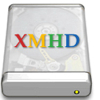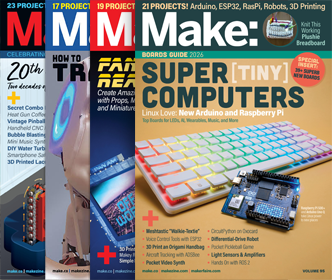Xbox 360 disassembled! Motherboard pics?
 Looks real…xavxbox.com has what they claim are pictues of the Xbox 360 motherboard. Their site says the GPU is under the left fan, and the CPU under the right. To translate roughly from French, they also state , “Soon on the site, a tutorial for disassembling the Xbox 360…” An unknown source had sent in the pic, but given xavxbox is a hacking site, hopefully someone like Team Xecuter is hard at work… [via] Link.
Looks real…xavxbox.com has what they claim are pictues of the Xbox 360 motherboard. Their site says the GPU is under the left fan, and the CPU under the right. To translate roughly from French, they also state , “Soon on the site, a tutorial for disassembling the Xbox 360…” An unknown source had sent in the pic, but given xavxbox is a hacking site, hopefully someone like Team Xecuter is hard at work… [via] Link.




 The code name, Space Beast, was one they came up with in the wee hours of the night. Tyler Lyon, Daniel Winegar and Chad Thornley were overtired and giddy as they tackled a science fair project. Their idea: Eliminate the use of Freon in automobile air-conditioning systems by relying on the Peltier effect – of course.
The code name, Space Beast, was one they came up with in the wee hours of the night. Tyler Lyon, Daniel Winegar and Chad Thornley were overtired and giddy as they tackled a science fair project. Their idea: Eliminate the use of Freon in automobile air-conditioning systems by relying on the Peltier effect – of course. 
 There are tons of Google maps mashups, but this one is getting us close to the dream of driving around and our cars displaying the cheapest prices on gas, hotels, etc… This is a Google map mashup of a few cities that combines the data from Priceline. It’ll be interesting to see ratings and other data added over time. It’s too bad AAA never got the Web 2.0 religion…
There are tons of Google maps mashups, but this one is getting us close to the dream of driving around and our cars displaying the cheapest prices on gas, hotels, etc… This is a Google map mashup of a few cities that combines the data from Priceline. It’ll be interesting to see ratings and other data added over time. It’s too bad AAA never got the Web 2.0 religion… 
 It looks like Sony is releasing a new firmware update to the PSP July 27th that will have a lot really great features- a web browser, h.264 support (for TV watching), wallpaper, image receiving, video navigation updates, mp4 support and a lot more. I wouldn’t be surprised if you couldn’t sync with iTunes soon as odd as that sounds. Any way, this will most certainly break the ability to play homebrew code, so you might want to hold off of get another one.
It looks like Sony is releasing a new firmware update to the PSP July 27th that will have a lot really great features- a web browser, h.264 support (for TV watching), wallpaper, image receiving, video navigation updates, mp4 support and a lot more. I wouldn’t be surprised if you couldn’t sync with iTunes soon as odd as that sounds. Any way, this will most certainly break the ability to play homebrew code, so you might want to hold off of get another one. 
 Most commercial snow camping sleds (called a pulk or pulka in Europe) and expedition sleds, are quite expensive. They can be in the several hundred dollar range, and while worth it for major a expedition, for the casual winter camper who may only do a couple of trips a winter, such an expenditure seems a little pricey. Here’s how to make one. Thanks Dan!
Most commercial snow camping sleds (called a pulk or pulka in Europe) and expedition sleds, are quite expensive. They can be in the several hundred dollar range, and while worth it for major a expedition, for the casual winter camper who may only do a couple of trips a winter, such an expenditure seems a little pricey. Here’s how to make one. Thanks Dan! 
 XmailHardDrive directly connects with your Gmail account to then turn it into a portable virtual hard drive that you can access from anywhere in the world. You simply enter your Gmail username and password, just like the other third party software, and then using the username and password combination it authenticates with the Gmail servers and connects you to your personal account. Therefore allowing the user to be able to upload files to their Gmail account.
XmailHardDrive directly connects with your Gmail account to then turn it into a portable virtual hard drive that you can access from anywhere in the world. You simply enter your Gmail username and password, just like the other third party software, and then using the username and password combination it authenticates with the Gmail servers and connects you to your personal account. Therefore allowing the user to be able to upload files to their Gmail account. 

